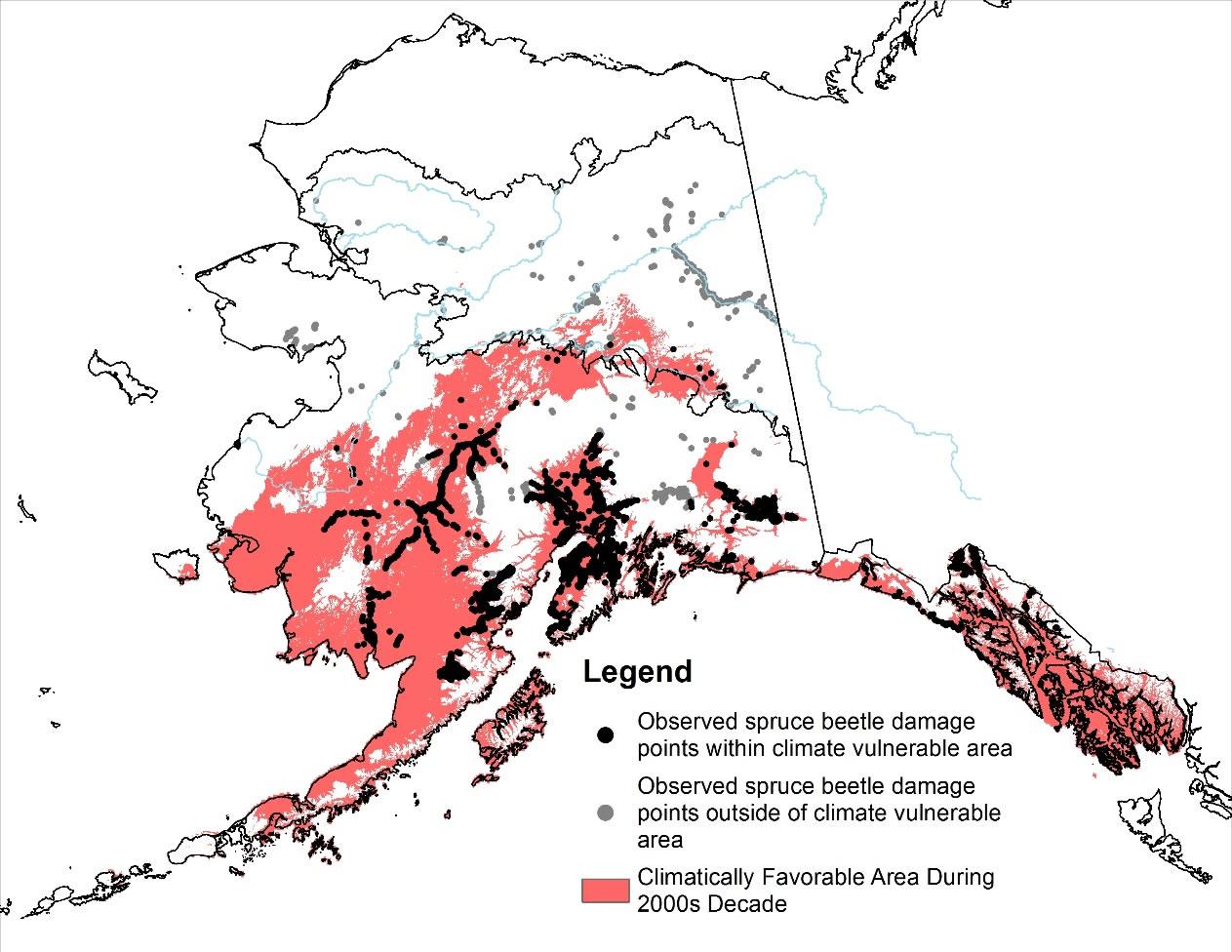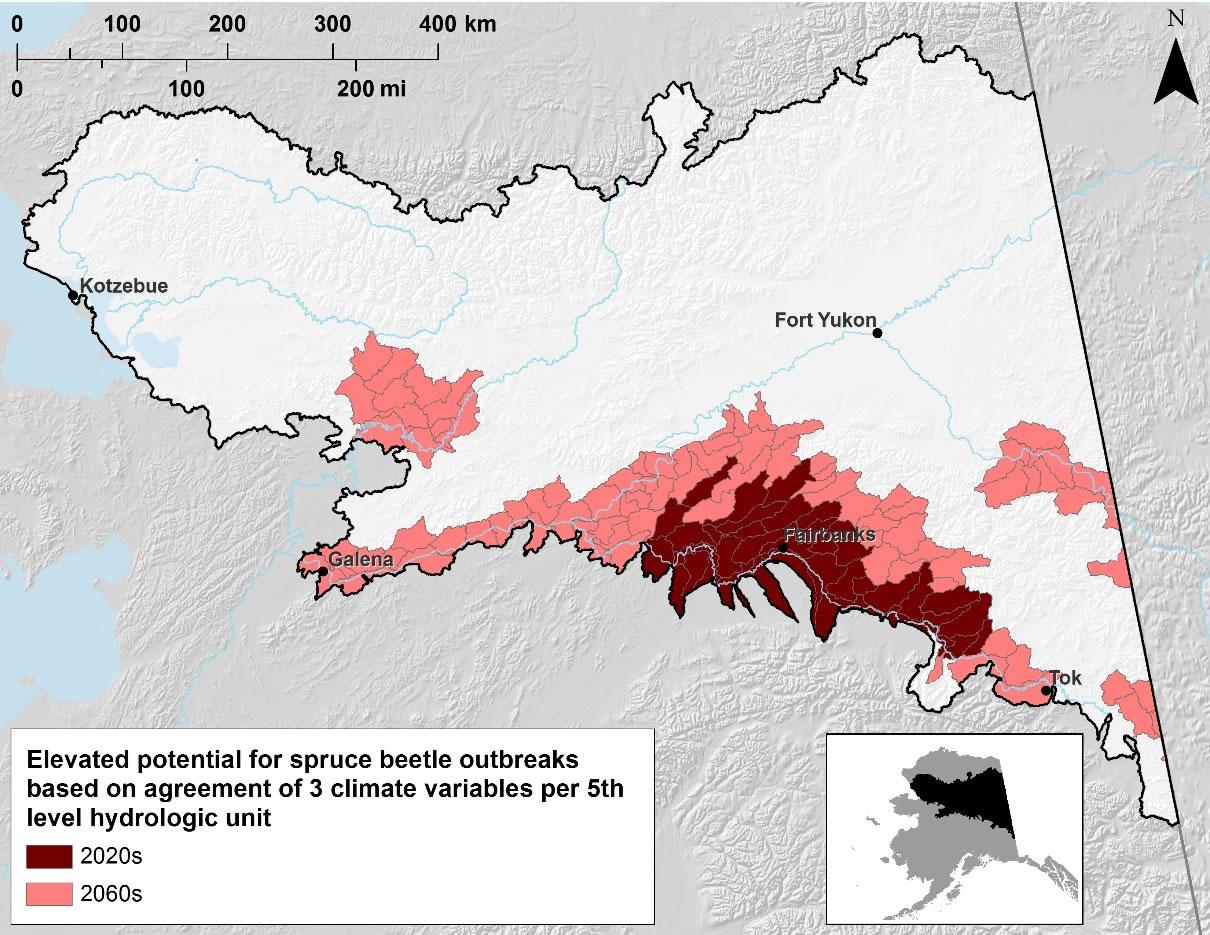Modeling future potential for spruce beetle outbreaks is not possible because of stochasticity of outbreaks and poor understanding of some environmental factors influencing outbreaks. However, linkages have been previously demonstrated for several climate variables with spruce beetle life cycle and with potential for severe, regional outbreaks.
Climate vulnerability to spruce beetle outbreaks from 2000 to 2009
Regional spruce beetle outbreaks in Alaska have been linked with warmer, longer summers compared to historic averages. Higher summer temperature increased reproductive success and reduced the generation time of spruce beetles on the Kenai Peninsula, where spruce beetle outbreaks have been concurrent with 5 to 6 years of sustained warm summers for at least the past 200 years when stands of mature spruce were available. Longer growing seasons have allowed earlier emergence, attack, and breeding of adult spruce beetles. Warmer decadal average January temperatures would be likely to increase spruce beetle overwinter survival in the study area because temperatures cold enough to kill spruce beetles would be reached less frequently and sustained for less time. Climate vulnerable areas are defined for each decade by the area where mean June-July-August temperatures were ≥ 10.5°C, mean January temperatures were ≥ -21.3°C, and growing season length was ≥ 173 days. Kernel Density Estimation was performed using Geospatial Modeling Environment (GME) with points of spruce beetle-related damage from 2000 to 2009. The kernel density was used to determine climate thresholds for spruce beetle outbreaks.
Future climate vulnerability to spruce beetle outbreaks
Future climate vulnerability indicates 5th level hydrologic units where the majority of the hydrologic unit is predicted to have mean June-July-August temperatures ≥ 10.5°C, mean January temperatures ≥ -21.3°C, and growing season length ≥ 173 days. During the 2020s decade, conditions along the central Tanana River and north of Fairbanks will be climate-vulnerable to severe, regional spruce beetle outbreaks. By the 2060s decade, climate-vulnerable regions will include: along most of the Tanana River, Fairbanks north to the Yukon River, along the upper Yukon River between Eagle and Circle, along the Yukon River from the confluence with the Tanana River to Galena at the edge of the study area, and along the southern Koyukuk River. Much of the area will not likely become climate-vulnerable to severe, regional spruce beetle outbreaks by the 2060s decade. Kernel Density Estimation was performed using Geospatial Modeling Environment (GME) with points of spruce beetle-related damage from 2000 to 2009. The kernel density was used to determine climate thresholds for spruce beetle outbreaks.


